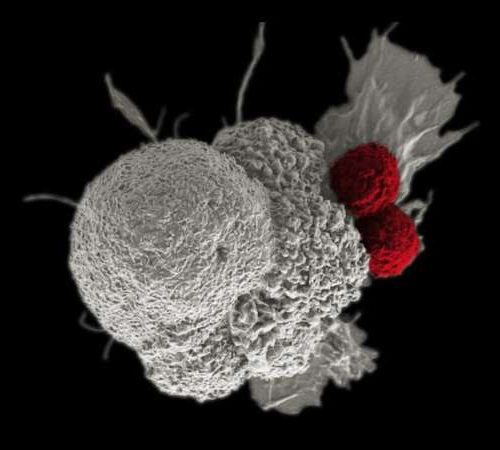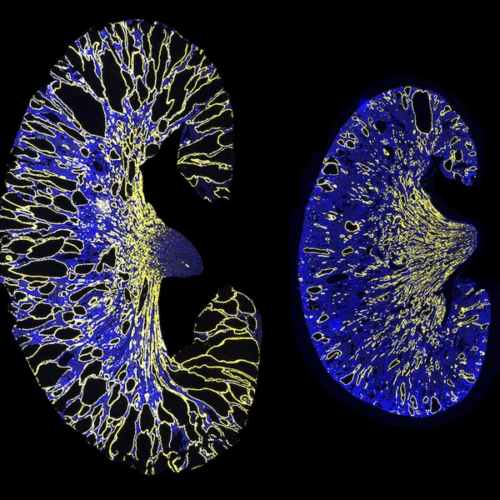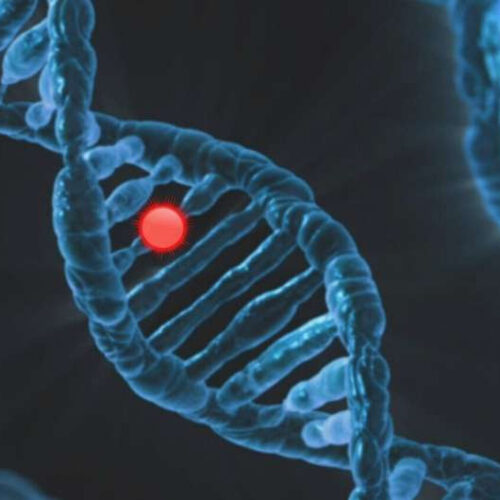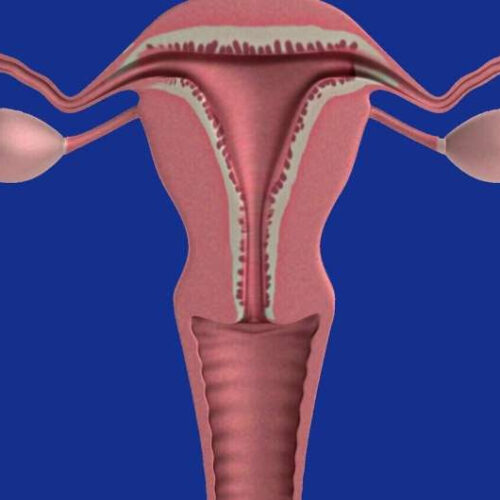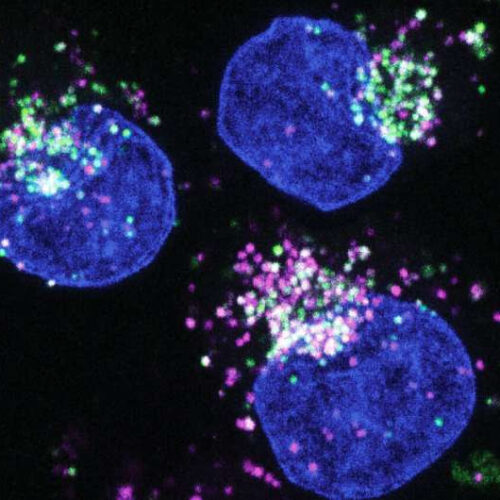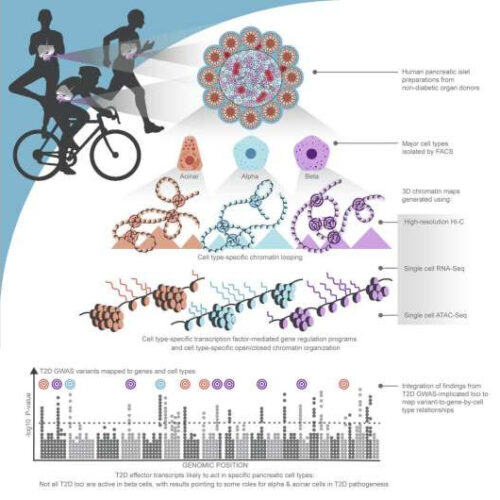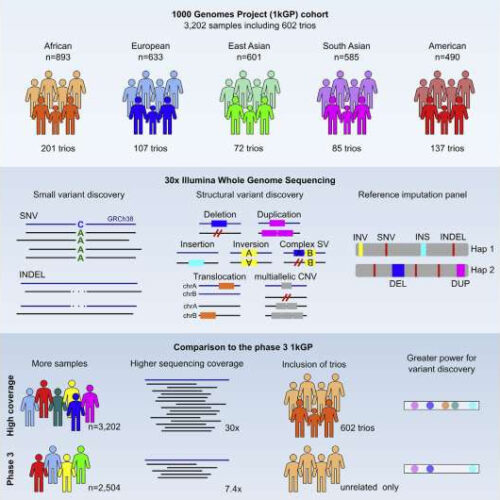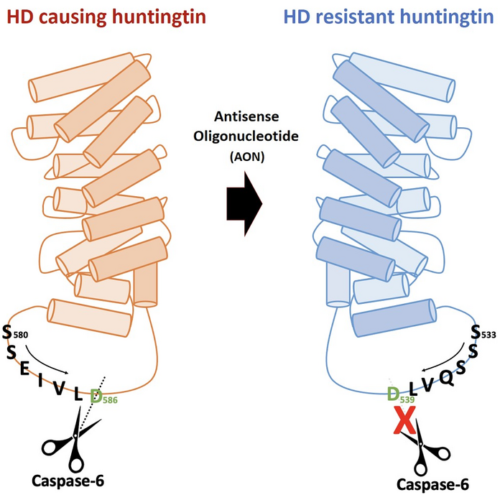by Ludwig Cancer Research Graphical abstract. Credit: Molecular Cell (2022). DOI: 10.1016/j.molcel.2022.04.010 A team led by Ludwig Stanford’s Laura Attardi explored novel mechanisms by which the p53 protein, often called the guardian of the genome, regulates gene expression by looking for novel proteins that interact with the versatile tumor suppressor in response to cellular stressors. The researchers...
Category: <span>Genetics</span>
Deliberately damaging DNA could boost the effectiveness of immunotherapy in kidney cancer
by Institute of Cancer Research Cancer cell being attacked by two immune cells. Credit: NIH Image Gallery, CC BY 2.0 DNA damage is one of the foundational causes of cancer. But researchers have now found that deliberately causing DNA damage—by delivering additional treatments like radiotherapy—could improve the effectiveness of immunotherapy for some people with kidney...
UT Southwestern researchers identify a gene therapy target for polycystic kidney disease
UT SOUTHWESTERN MEDICAL CENTER IMAGE: THIS IMAGE SHOWS A SEVERELY CYSTIC KIDNEY FROM A ADPKD MOUSE MODEL (LEFT). DELETING THE PKD1 MIR-17 BINDING SITE MARKEDLY REDUCES CYST GROWTH (RIGHT). YELLOW INDICATES KIDNEY COLLECTING DUCTS AND BLUE INDICATES NUCLEI. CREDIT: UT SOUTHWESTERN MEDICAL CENTER Blocking the inhibition of PKD1 and PKD2 gene expression by deleting a binding site for microRNAs...
Scientists discover novel mechanism that causes rare brain disease
by University of Pittsburgh Credit: Pixabay/CC0 Public Domain A rare but potentially debilitating brain disorder finally has a definitive cause, thanks to research teams working on opposite sides of the globe. A mutation in the gene that manages the transportation of zinc, an essential dietary micronutrient, out of cells is responsible for the disorder, called...
HSD3B1 gene research shows an association between genotype and endometrial cancer
by Cleveland Clinic Credit: Pixabay/CC0 Public Domain The HSD3B1 gene could hold clues for predicting and treating endometrial cancer, according to a novel finding from the Cleveland Clinic’s Lerner Research Institute. Researchers found a certain HSD3B1 genotype was more common in women with type 2 endometrial cancer, according to the results published in JNCI Cancer Spectrum. Those...
Breaking down proteins: How starving cancer cells switch food sources
by German Cancer Research Center Human cancer cells (cell nucleus in blue) feeding on protein (Albumin, labeled in green). The proteins are digested and broken down into amino acids in the lysosomes (magenta). Credit: W. Palm / DKFZ Cancer cells often grow in environments that are low in nutrients, and they cope with this challenge...
Researchers identify multiple causal genes that drive type 2 diabetes risk
by Children’s Hospital of Philadelphia Credit: Su et al, Cell Metabolism (2022). DOI: 10.1016/j.cmet.2022.08.014 Researchers from Children’s Hospital of Philadelphia (CHOP) have used advanced three-dimensional mapping techniques at a microscopic level to identify a multitude of genetic variants and corresponding target gene pairings in the pancreas that are implicated in type 2 diabetes. In addition to these...
Researchers expand and upgrade the 1000 Genomes Project resource using whole-genome sequencing
by New York Genome Center The graphical abstract of the study. Credit: Marta Byrska-Bishop (New York Genome Center) Seven years ago, the 1000 Genomes Project (1kGP) published an open-access resource based primarily on low-coverage whole-genome sequencing (WGS) data of 2,504 individuals from 26 populations representing five continental regions of the world, making it the first...
Researchers study gene mutations in children with ‘uncombable hair syndrome’
by Bob Yirka, Medical Xpress Credit: Unsplash/CC0 Public Domain A large international team of researchers has conducted a genotypic spectrum analysis for uncombable hair syndrome (UHS) and in so doing has found two pathogenic missense variants in PADI3 that account for the majority of cases. In their paper published in JAMA Dermatology, the group describes how...
Establishing a novel strategy to tackle Huntington’s disease
THE KOREA ADVANCED INSTITUTE OF SCIENCE AND TECHNOLOGY (KAIST) IMAGE: FIGURE. HUNTINGTON’S DISEASE RESISTANCE HUNTINGTIN PROTEIN INDUCED BY ANTISENSE OLIGONUCLEOTIDE (AON) IS RESISTANT TO CASPASE-6 CLEAVAGE, THEREFORE, DOES NOT CAUSE HUNTINGTON’S DISEASE WHILE MAINTAINING NORMAL FUNCTIONS OF HUNTINGTIN. CREDIT: HYEOUNGJUN KIM, ET AL., 2022 Through an international joint research effort involving ProQR Therapeutics of the...


